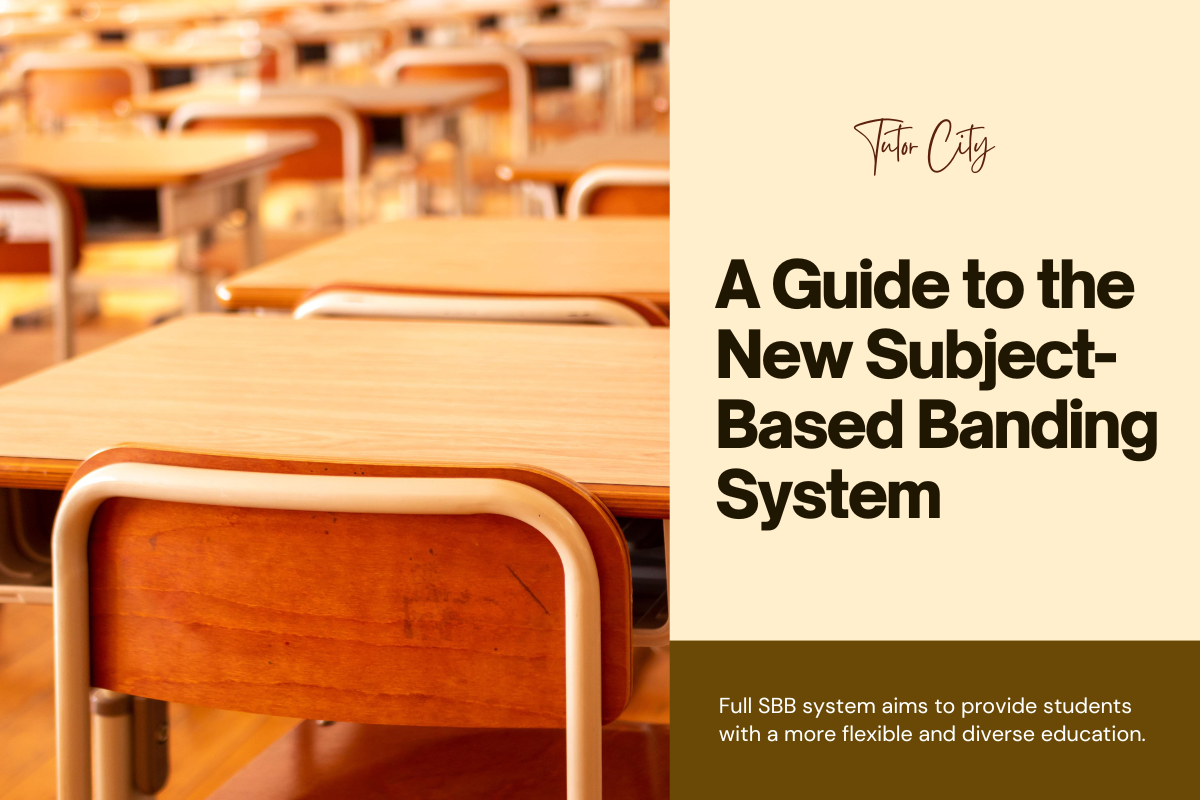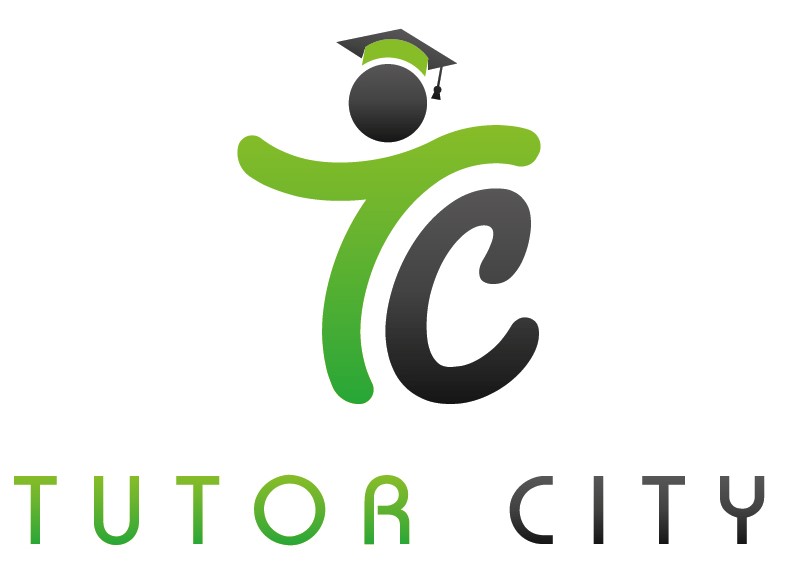
- Published by: Tutor City
- March 22, 2024
- Education
A Guide to the New Subject-Based Banding System for Secondary School
The Ministry of Education (MOE) in Singapore has introduced a new subject-based banding system that will replace the existing streaming system in secondary schools. This new system, called Full Subject-Based Banding (Full SBB), will be implemented starting from the 2024 Secondary 1 cohort. The Full SBB system aims to provide students with a more flexible and diverse education catering to their strengths and interests.
Key Takeaways
- The Full SBB will replace the existing streaming system in secondary schools in Singapore.
- It aims to provide students with a more flexible and diverse education.
- Students will be posted to secondary schools through Posting Groups 1, 2, and 3, while the mixed-form classes will be introduced.
Overview of Subject-Based Banding
Subject-Based Banding (SBB) is a new system that replaces the previous streaming system in secondary schools across Singapore. It is part of the Ministry of Education's (MOE) efforts to provide a more flexible and inclusive education system that caters to students' different learning needs and abilities.
Purpose of Subject-Based Banding
The primary purpose of SBB is to provide students with greater flexibility in choosing their subjects and academic pathways based on their strengths and interests.
Under the new system, students are no longer restricted to a fixed academic stream based on their Primary School Leaving Examination (PSLE) scores. Instead, they are placed in one of three Posting Groups based on their PSLE scores, and they can choose to take subjects at different levels based on their abilities and interests.
Hence, SBB aims to provide students with a more holistic and personalised education experience that helps them develop their strengths and interests rather than limiting their options based on their PSLE scores.
Key Changes from Previous System
The previous system of streaming in secondary schools was based on students' PSLE scores, which determined the academic stream they were placed in. That means the students were often placed in a fixed academic stream that limited their options for choosing subjects and academic pathways.
Under SBB, students are placed in one of three Posting Groups based on their PSLE scores, and they can choose to take subjects at different levels based on their abilities and interests. It gives students greater flexibility and choice in their academic pathways and helps them develop their strengths and interests.
Another critical change under SBB is that students are no longer labelled as "Normal" or "Express" based on their academic stream. Instead, they are referred to as Secondary 1, 2, or 3 students, which helps reduce the stigma associated with the previous streaming system.
Implementation Process
Eligibility Criteria
Under the new system, students can take subjects at different levels based on their strengths and interests. To be eligible for the Full SBB system, students must have obtained a Primary School Leaving Examination (PSLE) score of 8 points or better.
Here is the table mentioning the range of PSLE scores and their posting groups:
|
PSLE Mark Range |
Posting Group |
Subject Level |
|
4 to 20 |
3 |
G3 |
|
21 to 22 |
2 or 3 |
G2 or G3 |
|
23 to 24 |
2 |
G2 |
|
25 |
1 or 2 |
G1 or G2 |
|
26 to 30 (achievement level 7 in English & Maths) |
1 |
G1 |
Subject Selection Procedure
The subject selection procedure for the Full SBB system differs from the previous Secondary 1 posting system. Instead of being posted to secondary schools based on their PSLE scores, students are grouped into three Posting Groups (PGs) based on their PSLE scores.
PG 1 students will prioritise choosing subjects at the most challenging level, while PG 3 students will prioritise choosing subjects at the foundational level. PG 2 students will have the flexibility to choose subjects at different levels.
Timeline for Transition
The transition to the Full SBB system will take several years. In 2022, the first cohort of Primary 6 students experienced the new PSLE scoring system and Secondary 1 (S1) posting system. By 2024, all secondary schools should be running the Full SBB system. Schools can decide how quickly they want to implement the Full SBB system, with some schools already implementing full or partial subject-based banding.
Thus, the implementation process of the Full SBB system aims to provide students with greater flexibility and choice, allowing them to pursue their interests and strengths. Students eligible for the Full SBB system will have the opportunity to take subjects at different levels, which can help them develop a deeper understanding of the subjects they are passionate about.
Impact on Students
Academic Advantages
Under the new subject-based banding system, students can learn at a pace that suits them. It means that students who are strong in a particular subject can take that subject at a higher level, while those who need more support can take it at a lower level. This approach allows students to develop their strengths and interests, which can lead to better academic outcomes.
In addition, the subject-based banding system allows students to take a broader range of subjects. Ultimately, students can explore different areas of interest and develop a more diverse skill set. It can be particularly beneficial for students unsure about their future career path, as it allows them to try different subjects and discover their strengths.
Social and Emotional Considerations
While there are clear academic advantages to the subject-based banding system, there are also social and emotional considerations. One concern is that the system may create a sense of competition between students, particularly if they are in different bands. This could lead to feelings of inadequacy or low self-esteem for students in lower bands.
Another concern is that the system may lead to a lack of diversity in classrooms. If students are grouped according to their academic ability, creating a diverse classroom with students from different backgrounds and perspectives may be more challenging. Moreover, this could limit the opportunities for students to learn from each other and develop their social and emotional skills.
Overall, while the subject-based banding system has advantages and disadvantages, it is clear that it represents a significant change in the way that secondary schools operate. By allowing students to learn at a pace that suits them and explore different subjects, the system has the potential to improve academic outcomes and help students develop their strengths and interests. However, it is important to consider the system's social and emotional considerations and work to mitigate any potential negative effects.
Parental Guidance
Supporting Your Child's Choices
As a parent, supporting your child's choices and encouraging them to pursue their interests and strengths is important.
One way to support your child is to have open and honest conversations about their goals and aspirations. It can help you understand their interests and strengths and guide them toward subjects that align with their career aspirations.
Another way to support your child is to provide them with the necessary resources to succeed. It can include investing in additional tuition or educational materials, such as textbooks or online courses.
Understanding the New System
Under the new system, students will be assigned mixed-form classes based on their academic abilities and interests.
In these mixed-form classes, students will take six common curriculum subjects together, including Art, Character and Citizenship Education (CCE), Design and Technology (D&T), Food and Consumer Education (FCE), Music, and Physical Education (PE).
In addition to these common curriculum subjects, students can choose from a range of subjects at different levels, including Normal (Academic), Normal (Technical), and Express. It allows students to tailor their education to their individual needs and interests.
Parents need to understand the new system and how it works so that they can support their child's education. Parents can find more information about the new system on the Ministry of Education (MOE) website.
The Bottom-Line
The Full Subject-Based Banding system offers a more flexible and personalised learning journey. While it presents exciting possibilities, it can also be daunting for students navigating this new landscape. Tutor City, a leading tutoring agency in Singapore, can provide subject-matter experts to guide your child through their chosen banding levels. With personalised support, your child can excel in their strengths and develop a love for learning in all their subjects.






